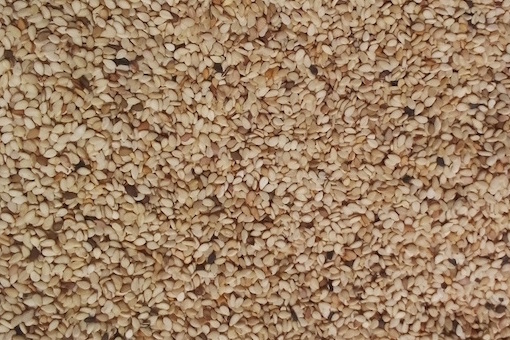Sesame seed is known as one of the oldest oilseed crops and is well tolerated to drought-like condition (Raghav et al). It has one of the highest oil contents of any seeds with a rich, flavour and is commonly used in cuisines across the world.
It is an annual plant growing 50 – 100cm tall and high yielding crops thrive best on well-drained, fertile soils of medium texture and neutral pH.
Based on colour, it is classified into white and brown varieties. The white grain (food grade) is used by bakeries for pastry garnishing and salad while the brown grain (oil grade) is used in the production of sesame oil.
According to Nigerian Export Promotion Council (NEPC), Nigeria is rated among the top
global producers and exporters of sesame with many years of stable production. The country is currently the 7th largest producer worldwide.
As at now, 90% of sesame production is by small-scale farmers with exports ranging between 140,000 to 180,000 tonnes/year. NEPC supports sesame trade from Nigeria by assisting in Exporters’ Directory, Exporter Certificate Verification portal, production map and international shows.
Nigeria is the largest producer of sesame seeds in Africa (proshare.ng) with about 580,00 tonnes produced in 2017. Sesame seeds present huge opportunities for Nigeria in terms of generating fiscal and export revenue and to take advantage of these opportunities and enhance competitiveness, Nigeria needs to focus on improving processing and yields.
Date from National Bureau of Statistics (NBS) showed that sesame was the most exported agricultural commodity in the 1st quarter of 2020 despite the COVID-19 outbreak that obstructed global trade. A total of ₦49 billion worth of the crop was exported to Japan, Turkey and Europe.
It is a good source of vegetable oil with no cholesterol making it the most demanded in the world. It can be used in pharmaceuticals, confectioneries, cosmetics and many industries for paints, soaps, lubricant and shampoos.
Sadly, it was learnt that the average yield per hectare of sesame in Nigeria is between 0.5 – 1.0 tonnes when compared to China with between 1.4 – 1.6 tonnes/ha. The gap is due to knowledge gap, poor crop management practices and poor processing procedures adopted by the small-scale farmers.



No comments:
Post a Comment